Skip to main content
|
||||||||||||||||||||||||||||||||||||||||
|
|
||||||||||||||||||||||||||||||||||||||||
STATISTICAL BRIEF #514:
|
||||||||||||||||||||||||||||||||||||||||
| August 2018 | ||||||||||||||||||||||||||||||||||||||||
|
Jerrod Anderson, PhD |
||||||||||||||||||||||||||||||||||||||||
Highlights
|
||||||||||||||||||||||||||||||||||||||||
IntroductionThe proper diagnosis of and treatment for child and adolescent mental health problems is an important public policy area. Attention Deficit Hyperactivity Disorder (ADHD) is a common mental disorder with symptoms including the inability to focus, excessive movement, and impulsivity. ADHD in children has been linked to various social outcomes, including lower educational attainment, lower occupational level and functioning, and higher rates of incarceration.This Statistical Brief uses data from the Medical Expenditure Panel Survey Household Component (MEPS-HC) for 2008 to 2015 to analyze reported ADHD diagnosis and purchases of prescription drugs to treat ADHD. Trends in diagnosis, prescription utilization, and prescription type are shown for two age groups (5–12 and 13–17 years). In addition, variation in diagnosis and prescription treatment are examined by poverty status and by insurance coverage for all children ages 5–17 for the 2014–15 period. All differences discussed in the text are statistically significant at the 0.05 level. |
||||||||||||||||||||||||||||||||||||||||
FindingsTrends in reported diagnosis The percentage of children ages 13–17 with a reported ADHD diagnosis was consistently just above 13 percent throughout the period from 2008–09 through 2014–15 (figure 1). However, the percentage of children ages 5–12 with a reported diagnosis of ADHD increased from 8.5 percent in 2008–09 to 10.4 percent in 2014–15, a 22 percent increase in reported diagnosis. The percentage of children ages 5–12 with a reported diagnosis was consistently lower than for those ages 13–17 across the time periods shown. Trends in prescription usage among those with a reported diagnosis For all two-year periods from 2008–09 to 2014–15, half or fewer of those ages 13–17 with a reported ADHD diagnosis had a prescription filled to treat ADHD, compared to at least 59.6 percent of those ages 5–12 (figure 2). Trends in ADHD prescription fills by drug type Stimulants are the most prevalent type of drug prescribed to treat ADHD (figure 3). In 2014–15, 92.1 percent of children ages 5–12 and 93.2 percent of those ages 13–17 with prescription treatment had a stimulant purchase. Across the time periods examined, children ages 5–12 with prescription treatment were somewhat more likely to have used both stimulants and non-stimulants than those ages 13–17 (e.g., 17.5 versus 13.1 percent in 2014–15). In both age groups, the proportion that received only non-stimulants was 10.5 percent or less in all periods. Variation in ADHD reported diagnosis by poverty status and by insurance coverage In 2014–15, the percent of those ages 5–17 with a reported diagnosis of ADHD declined as family income increased, with 14.5 percent of those in poor households and 9.3 percent of those in upper income households having a reported diagnosis (figure 4). About 15 percent of children with only public insurance had a reported ADHD diagnosis, which was higher than for children with any private insurance (9.6 percent) or no insurance (8.8 percent). Variation in prescription fills by poverty status and insurance coverage Of the children with a reported diagnosis of ADHD, approximately half of those living in households with incomes less than 400 percent of the poverty level filled a prescription that treats ADHD (figure 5), and those children living in upper income households were more likely to have prescription treatment than those in other households. The proportion of children with a reported diagnosis who had a filled prescription was lower for those with no insurance (35.5 percent) relative to those with any private insurance (57.0 percent) or only public insurance (51.9 percent). |
||||||||||||||||||||||||||||||||||||||||
Data SourceThe estimates in this Statistical Brief are based on data from the restricted prescription medicine files (available through the AHRQ Data Center), Full Year Consolidated Data Files (HC-121, HC-129, HC-138, HC-147, HC-155, HC-163, HC-171, HC-181), Medical Conditions Files (HC-120, HC-128, HC-137, HC-146, HC-154, HC-162, HC-170, HC-180), and Conditions Link Files (HC-118I, HC-126I, HC-135I, HC-144I, HC-152I, HC-160I, HC-168I, HC-178I) for 2008 through 2015. |
||||||||||||||||||||||||||||||||||||||||
DefinitionsReported ADHD diagnosisDiagnosis was based on the priority condition question for ADHD (public use file variable ADHDADDX) which asks if persons ages 5 through 17 have ever been told by a doctor or other health professional that they have Attention Deficit Hyperactivity Disorder or Attention Deficit Disorder. If the respondent answered yes, the child is considered to have a reported diagnosis. Age Age was defined as age on the last date of MEPS eligibility during the calendar year. Prescription treatment The analysis is restricted to those prescription records that were associated with an ICD9 code of 314 ("ADHD"). Of the drugs identified in these records, only those for which a peer-reviewed paper identified through PubMed or Google Scholar mentioned the use of the drug as a monotherapy for ADHD are categorized as treating ADHD. These restrictions excluded drugs that might be commonly prescribed for conditions that are comorbid with ADHD but are not prescribed for the treatment of ADHD. Prescription type Therapeutic class and subclass were assigned to MEPS prescribed medicines using Multum Lexicon variables from Cerner Multum, Inc.
Utilization was defined as purchasing (or obtaining) an outpatient prescription in the year of interest. Refills as well as original prescriptions are included in utilization estimates. Poverty status
|
||||||||||||||||||||||||||||||||||||||||
About MEPS-HCMEPS-HC is a nationally representative longitudinal survey that collects detailed information on health care utilization and expenditures, health insurance, and health status, as well as a wide variety of social, demographic, and economic characteristics for the U.S. civilian noninstitutionalized population. It is cosponsored by the Agency for Healthcare Research and Quality and the National Center for Health Statistics. |
||||||||||||||||||||||||||||||||||||||||
ReferencesKlein RG, Mannuzza S, Olazagasti MA, et al. Clinical and Functional Outcome of Childhood Attention-Deficit/Hyperactivity Disorder 33 Years Later. Arch Gen Psychiatry. 2012;69(12):1295-1303. doi:10.1001/archgenpsychiatry.2012.271For a detailed description of the MEPS-HC survey design, sample design, and methods used to minimize sources of nonsampling error, see the following publications: Cohen, J. Design and Methods of the Medical Expenditure Panel Survey Household Component. MEPS Methodology Report No. 1. AHCPR Pub. No. 97-0026. Rockville, MD: Agency for Health Care Policy and Research, 1997. https://meps.ahrq.gov/data_files/publications/mr1/mr1.shtml. Cohen, S. Sample Design of the 1996 Medical Expenditure Panel Survey Household Component. MEPS Methodology Report No. 2. AHCPR Pub. No. 97-0027. Rockville, MD: Agency for Health Care Policy and Research, 1997. https://meps.ahrq.gov/data_files/publications/mr2/mr2.shtml. |
||||||||||||||||||||||||||||||||||||||||
Suggested CitationAnderson, J. Reported Diagnosis and Prescription Utilization Related to Attention Deficit Hyperactivity Disorder in Children Ages 5–17, 2008–2015. August 2018. Statistical Brief #514. Agency for Healthcare Research and Quality, Rockville, MD. https://meps.ahrq.gov/mepsweb/data_files/publications/st514/stat514.shtml |
||||||||||||||||||||||||||||||||||||||||
|
AHRQ welcomes questions and comments from readers of this publication who are interested in obtaining more information about access, cost, use, financing, and quality of health care in the United States. We also invite you to tell us how you are using this Statistical Brief and other MEPS data and tools and to share suggestions on how MEPS products might be enhanced to further meet your needs. Please email us at MEPSProjectDirector@ahrq.hhs.gov or send a letter to the address below: Joel Cohen, PhD, Director Center for Financing, Access, and Cost Trends Agency for Healthcare Research and Quality 5600 Fishers Lane, Mailstop 07W41A Rockville, MD 20857 |
||||||||||||||||||||||||||||||||||||||||
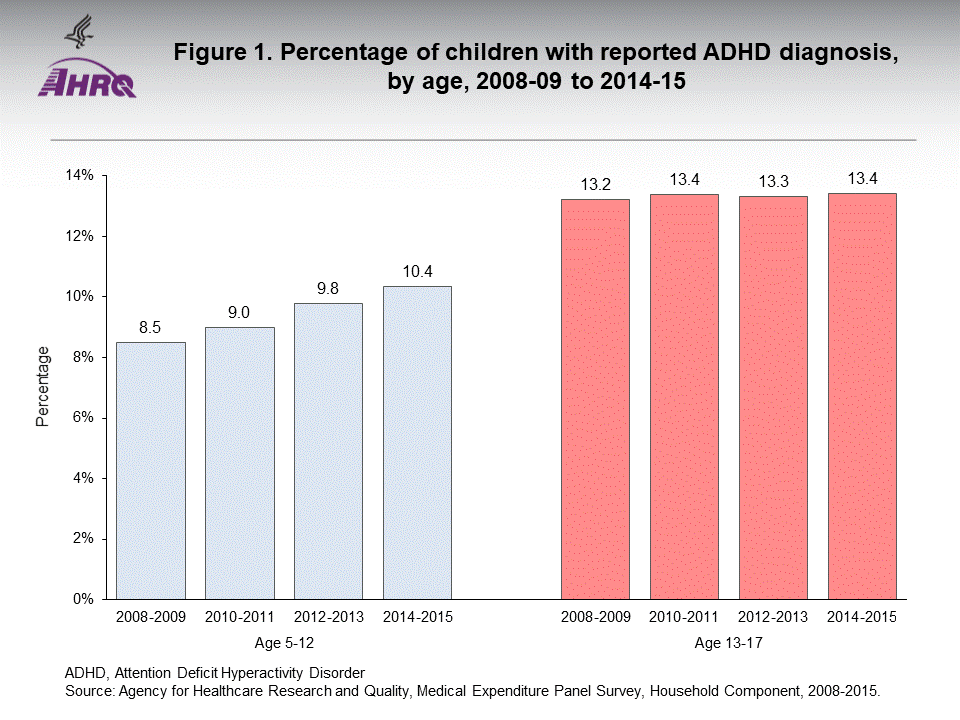 |
||||||||||||||||||||||||||||||||||||||||
|
||||||||||||||||||||||||||||||||||||||||
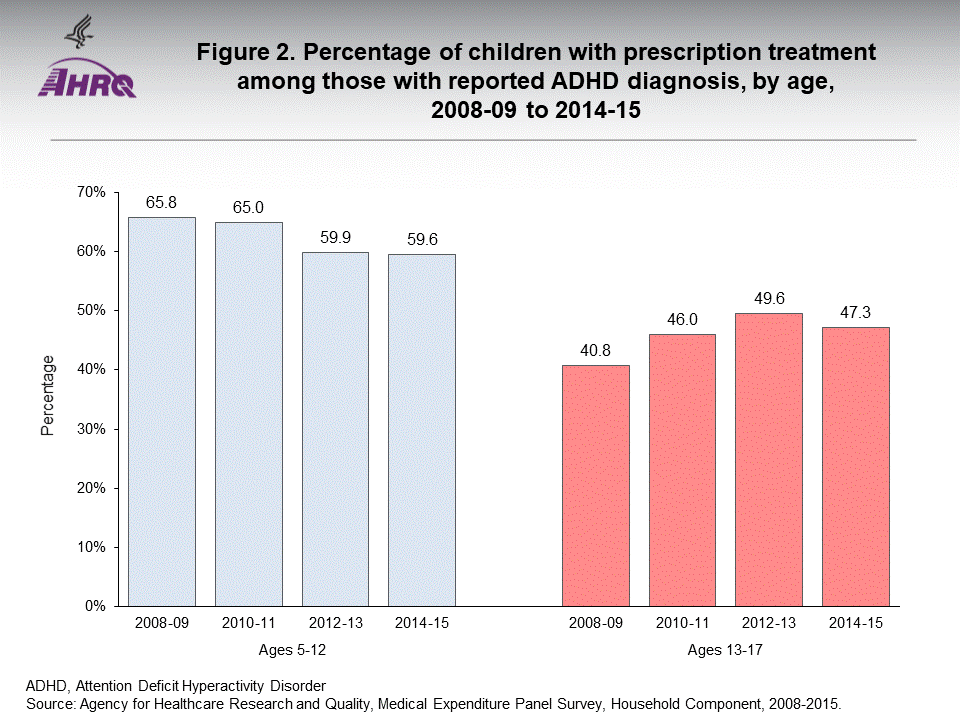 |
||||||||||||||||||||||||||||||||||||||||
|
||||||||||||||||||||||||||||||||||||||||
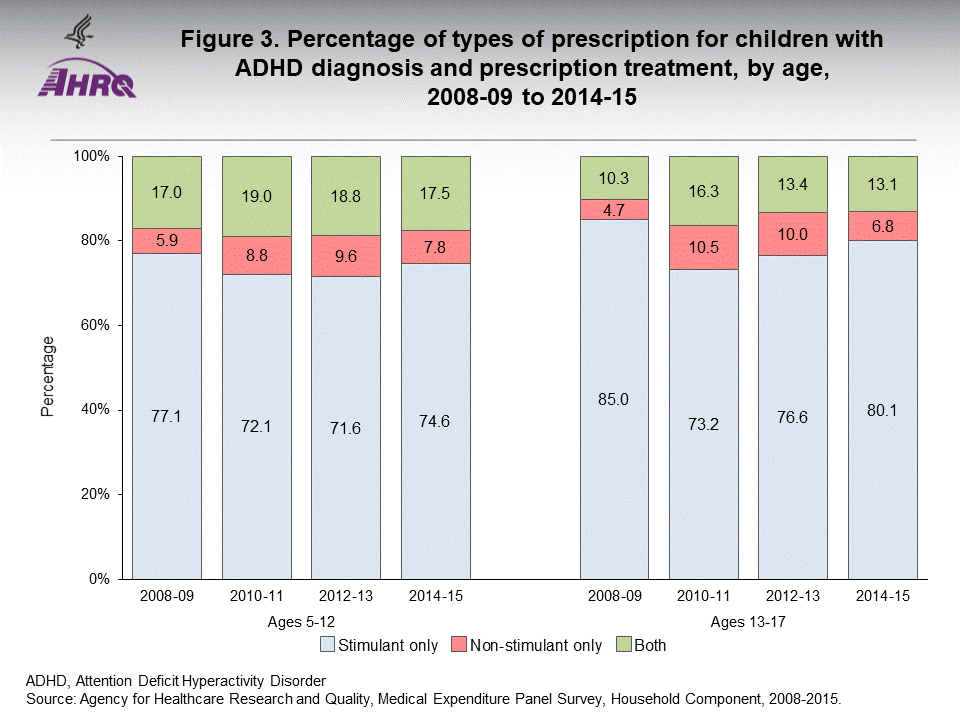 |
||||||||||||||||||||||||||||||||||||||||
|
||||||||||||||||||||||||||||||||||||||||
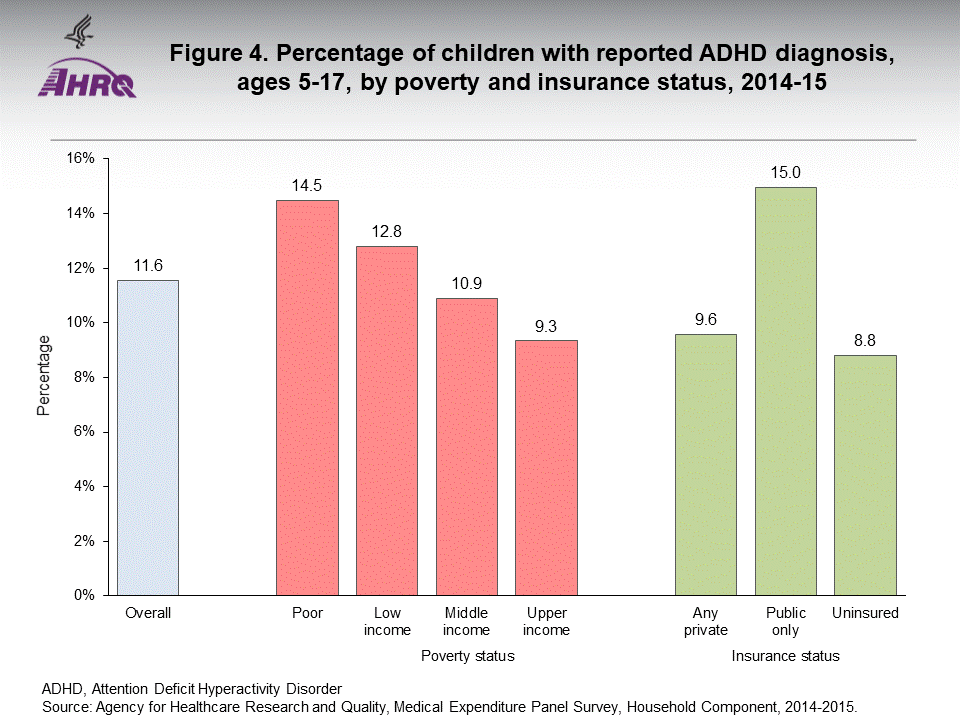 |
||||||||||||||||||||||||||||||||||||||||
|
||||||||||||||||||||||||||||||||||||||||
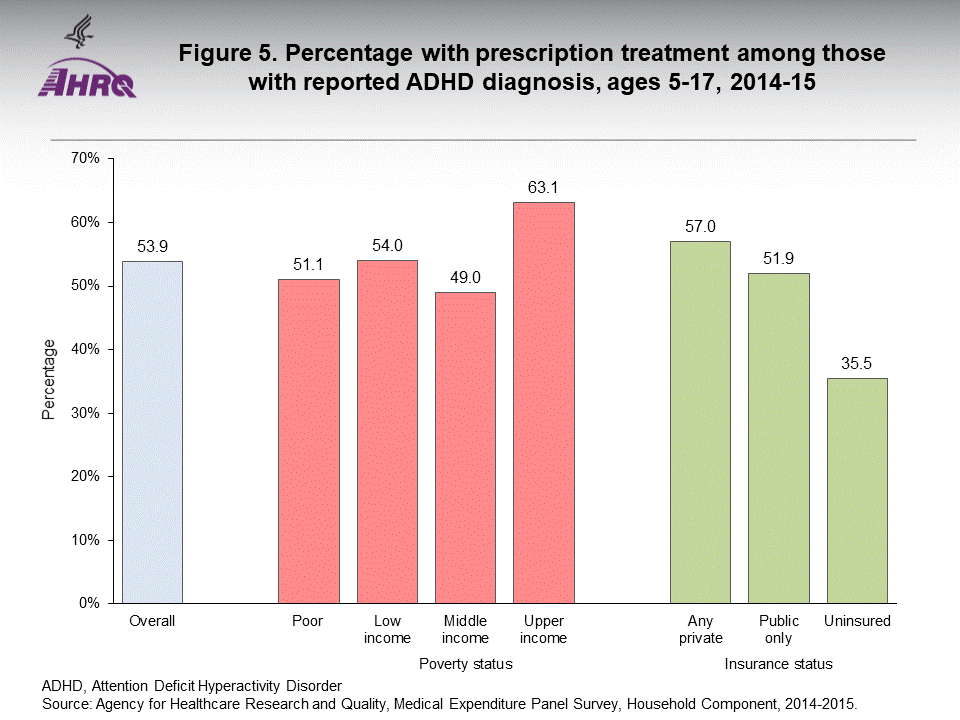 |
||||||||||||||||||||||||||||||||||||||||
|
||||||||||||||||||||||||||||||||||||||||
|
| ||||||||||||||||||||||||||||||||||||||||



